| |
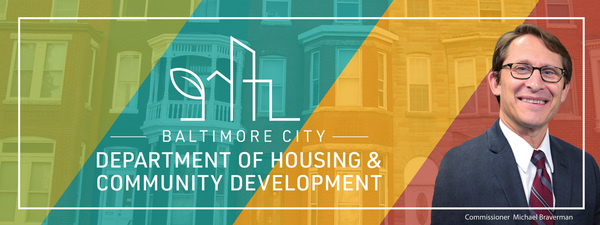
QUARTERLY UPDATE VOLUME I - ISSUE 1
|
|
|
Since being named Commissioner of the Department of Housing & Community Development (DHCD), I have been working to transform DHCD into a more robust community development agency; capitalizing on our existing strengths, and retooling our operation to bolster our work in support of Baltimore’s communities.
As a standalone agency, we have a heightened focus on community development and reinvesting in all neighborhoods. We have set an ambitious agenda and are employing strategies to preserve and lift every community.
We recognize that we can’t do this work alone. Community development is driven by the hard work of our residents, community associations, local businesses, property owners, community development organizations, schools, faith-based entities, philanthropy, anchor institutions, private developers, and many other stakeholders. Our efforts will only succeed if everybody takes part in the larger discussion and the work.
I want to thank you — the citizens of Baltimore — for your role in supporting the City’s growth and development over the years and for the many ways in which you have inspired our efforts.
Please look for this update on a quarterly basis to stay informed about progress with our strategy to move all communities forward.
|
|
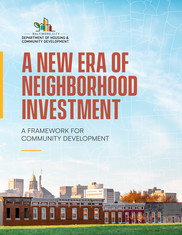
A comprehensive Community Development Framework was recently introduced to the public, highlighting the City’s overall strategy and plan for Baltimore’s neighborhoods. The Framework articulates a strategic approach for a new era of neighborhood investment leading to transformative change.
All Baltimore neighborhoods will be supported by building assets for future redevelopment, addressing blight, and improving the quality of life. Four initial Impact Investment Areas are highlighted to underscore how key strategies can be utilized to leverage investment for near-term growth in specific areas of the City. Additionally, a more comprehensive approach is being taken to support middle neighborhoods, which are home to many middle-income families, but continue to face challenges. Learn more.
As always, we invite your feedback on our approach, which you can submit here, and we look forward to working together to lift up every community in Baltimore.
|
|
|
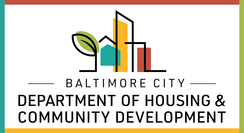
The City of Baltimore is devoting several new financial resources to aid in the revitalization of its neighborhoods. New resources include the Neighborhood Impact Investment Fund (NIIF); Community Catalyst Grants (CCG) Program; and the Affordable Housing Trust Fund (AHTF).
Learn more about these resources and how they complement our comprehensive approach to community development.
|
|
|
|
Mayor Catherine E. Pugh and the City’s Department of Housing & Community Development (DHCD) announced grant awards for operating funds under the Community Catalyst Grants Program (CCG) during a community event hosted by the Agency.
A total of $1.75 million in CCG operating funds were disbursed to 35 organizations for community-based projects.
The Agency received more than 100 applications for this round of operating support. While the number of requests exceeded available funding, DHCD looks to offer this operating support on an annual basis and is encouraging organizations to reapply. View the event photo gallery.
|
|
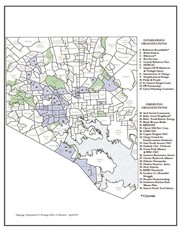 |
|
|
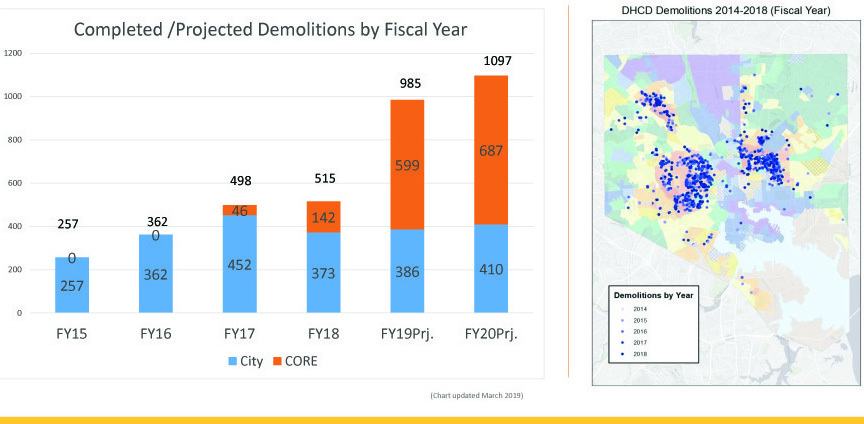
There are many Baltimore Neighborhoods that continue to suffer from profound disinvestment, vacancy, and high concentrations of poverty. These conditions make it difficult for communities to generate demand for housing and the private investment needed for revitalization.
Blight reduction and land assembly are major components in the strategy to improve the quality of life in many parts of the City and create the conditions necessary for reinvestment and revitalization. The City’s current proposed budget calls for a significant increase of $5 million for this purpose. These funds, along with continued support from the State of Maryland through Project CORE (Creating Opportunities for Renewal and Enterprise), will have launched the most aggressive demolition effort in decades.
As a result of this State and local effort, we expect to reduce the number of vacant and boarded properties to below 15,000 by the end of Fiscal Year 2020 - the lowest number in more than 15 years.
Learn more about DHCD’s Capital Improvement Plan.
|
|
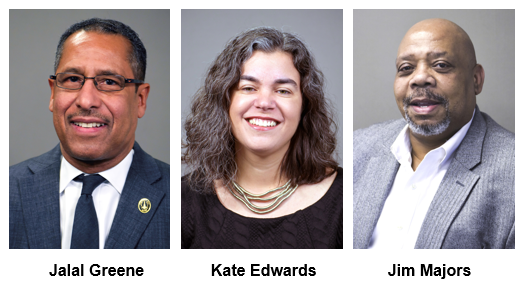
DHCD has reorganized its Development Division in a way that brings together land and capital. This strategy bolsters the Agency's development function and builds capacity for agency development initiatives.
With new resources and new leadership, the Agency is now better equipped to focus on investing in neighborhoods, managing complex major projects, and fulfilling the visions of DHCD’s many community development partners.
Jalal “Jay” Greene, who has expertise in affordable housing, real estate development and municipal finance, now serves as DHCD’s first Chief Operating Officer (COO). While also serving as Acting Deputy Commissioner for Development, Mr. Greene manages all development activities, and as COO, oversees operations for the Agency’s core undertakings. As part of this reorganization, Jim Majors, DHCD’s former Director of Project Finance, has been named Assistant Commissioner for Project Finance and Development, and Kate Edwards, formally of the Department of Planning, is now Assistant Commissioner for Land Transactions and Management.
Learn more about the Agency’s organization and leadership.
|
|
|
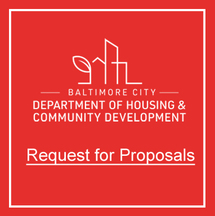
Multiple Requests for Proposals (RFPs) have been issued seeking housing and mixed-use development plans for sites in various Baltimore neighborhoods. These development opportunities are designed to capitalize on the growing strengths and existing assets in neighborhoods such as Coldstream Homestead Montebello, Park Heights, Station North, and the Historic Upton neighborhoods.
These neighborhoods have great assets to leverage, and now as a result of collaborative efforts, are poised for transformative growth and investment.
DHCD’s Development Division considers many factors when evaluating proposals; including development diversity, population density, existing financing and development resources, and the proposed strategy to accomplish specific goals and objectives of respective neighborhood stakeholders.
Learn more about RFPs for development opportunities in Coldspring, Upton, and Waverly.
|
|
|
|
Michael Braverman, Commissioner
|
|
|
|
|